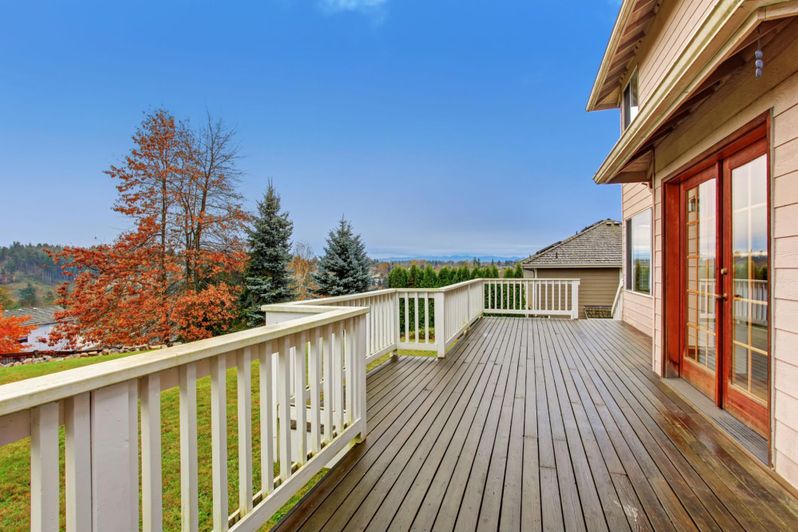The increasing popularity of composite decking in the past decade may come as a surprise to some homeowners. Most people love the authentic, natural quality of a wooden deck, so what makes composite decking such a desirable option? Is it a better alternative to natural wood? Let’s talk about some of the pros and cons of wood and composite decking.
Composite decking is made from wood fibres encased in plastic and, although it may not look as natural as cedar or redwood, it is much more durable. One of the exceptional benefits of composite decking is that it withstands the weather more effectively than wood with an average lifespan of about 50 years, compared to wood’s 10-30 years. The wood-plastic combination is moisture resistant, so your deck won’t rot, crack, warp, or splinter. It will also stay free of insects. The outdoor durability of this material means it can be easily recycled to build a new deck. The composite can also be heated and bent to fit its surroundings and won’t fade as quickly as wood. If it does fade, you can easily paint or stain it to renew its look. Other than a rare painting job, the only maintenance composite decks require is occasional sweeping or washing, saving you money in the long run.
Treated lumber has its perks too. Nothing can beat the authentic look of pressure-treated pine, cedar, redwood, and other types of natural wood. Real wood decks still last quite a long time, and they’re more economically friendly than composite decks. Besides these advantages, wood decking doesn’t cost as much initially as composite materials. The maintenance cost, however, is where the two differ.
Unlike composite, wood decking needs to be sanded, cleaned, and stained or painted every 2 to 5 years. Without staining, the deck surface will absorb moisture, making it susceptible to splintering, insect damage, and rotting. Wood boards may cost less to purchase and install, but it doesn’t have the same durability as composite materials.
The bottom line is that composite decks are popular for a reason. Even though wood may be cheaper initially, the lower maintenance costs of composite have proven to be worth it in the long run. Now it’s a matter of user preference. Some homeowners may want to save as much time and money as they can on a new composite deck, while others may be willing to do the work to treat their wood decks, preferring the vintage look of natural wood. Now, it’s up to you to decide!











